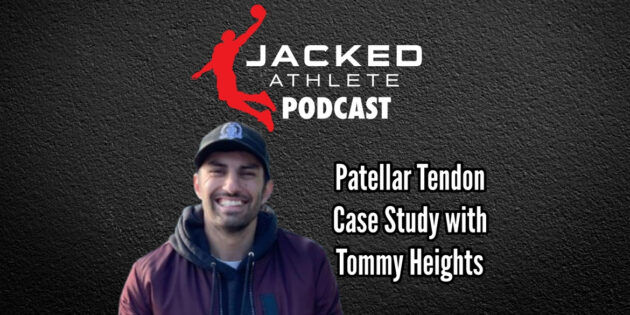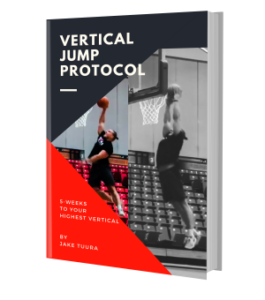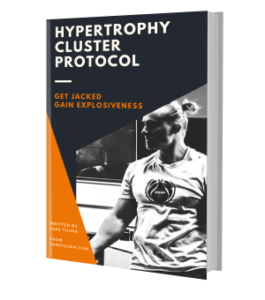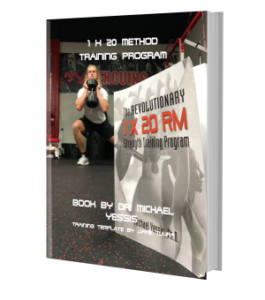https://podcasts.apple.com/us/podcast/jacked-athlete-podcast/id1462537296?i=1000704957130
Jumper’s Knee: “it’s not like it hit me right away or I had one singular injury that was like, my knee is messed up. It was an accumulation of like six or seven months where I was making these huge gains. I went from 28 inches all the way up to close to 38 inches. I’d have a little knee pain here and there. And it kind of just kind of just gradually increased over time. But once I got to around 10 months, 38 inches, I was like dunking a lot all the time and have good days and bad days but there was a specific session where I know I just went in and I really want to get a specific couple of dunks down for a video and just cooked my knee.”
“While it was really effective at increasing my vert, because I had so much intensity and so much volume in a place where like I already had a good strength base, I had no load management skills. I really didn’t know how to rehab and recover.”
“I was ready to drink any snake oil you give me because I was like I just want to fix my knee… So I tried knees over toes for months and months. I think you get a little bit of limited success just because you kind of stop jumping and it heals itself a little bit and you are do a little bit of quad exercises and I was already strength training to a certain degree.”
“I think the issue is that when I got into this PT scenario, they were really good at treating people who were working in the office who have a day job and they’re sitting all day and they’re not really going and trying to hit a 40 inch vertical and I think the difference being if you’re working with somebody who wants to apply that much force to your knee, you need to be able load it properly to recover… And we just never got into that really heavy loading phase.”
“You start with this 30, 40 pound isometric in your left knee and you’re like, man, this is like, how weak am I? … And it’s so surprising because I switched to my right knee and it’s like, I could do an easy quad extension for, you know, 180 pounds, whatever it is.”
“I gave up drinking. And I think that had a huge cascade onto the rest of my progress kind of falling together. And so as soon as I did that, was applying, was going through JKP. I was kind of applying all these concepts and working them into my workouts, doing my isometrics.”
“When you go through 13, 14 months of chronic pain and you can’t figure it out and you’re finally at a point when you’re like, I can jump again and make progress. I was like nervous the first three months cause I was like, I feel so good that I feel like this is like too much and something’s gonna happen like you get anxious about being injured again.”
“It was a lot of yo-yoing… I was like, if I feel good one day, I’ll go and go 100%. It was like this zero or nothing mentality that I did for a long time.”
“That patience and really taking it step by step is something that has really been hard for me to learn… just jumping right back into it, brutal. How dumb.”
“I never had any issues when I was like moving horizontally ⁓ or even just like laterally but not jumping high. It’s really when I’m getting that full two foot max approach jump. And so like playing basketball has become like my favorite warmup because then my mind is off it, your body gets warm, you feel good. I do some explosive movements because I like to cut a lot. I probably dribble too much and people call me a bull hog but I get out there and I’m playing and then afterwards after that first game where you have a little bit of sweat built up, it was like a 15 minute game. You’re feeling good. You bricked a bunch of shots cause you came in cold, but then you like, you put a dunk down and you’re like, man, this was like the best warmup.”
“Wall sits kind of hurt for a while. Knee extensions definitely hurt at first. Like it definitely was uncomfortable. Now they’re much better.”
“At least for me, it felt like 99 % of the time, it’s like, the answer was, you just need to load it properly and progressively and go through these things and stop looking for some perfect thing to fix it because the perfect thing to fix it is just time, progression, and going through the proper steps.”
“If you want to actually recover and get back to where you’re at, you have to take it seriously. And that means doing all of the hard things and sometimes changing your life too and the things that you do on regular basis to be able to facilitate that. Like whether it’s the sleeping, the drinking, the nutrition.”
Instagram: https://www.instagram.com/tommy__heights/



